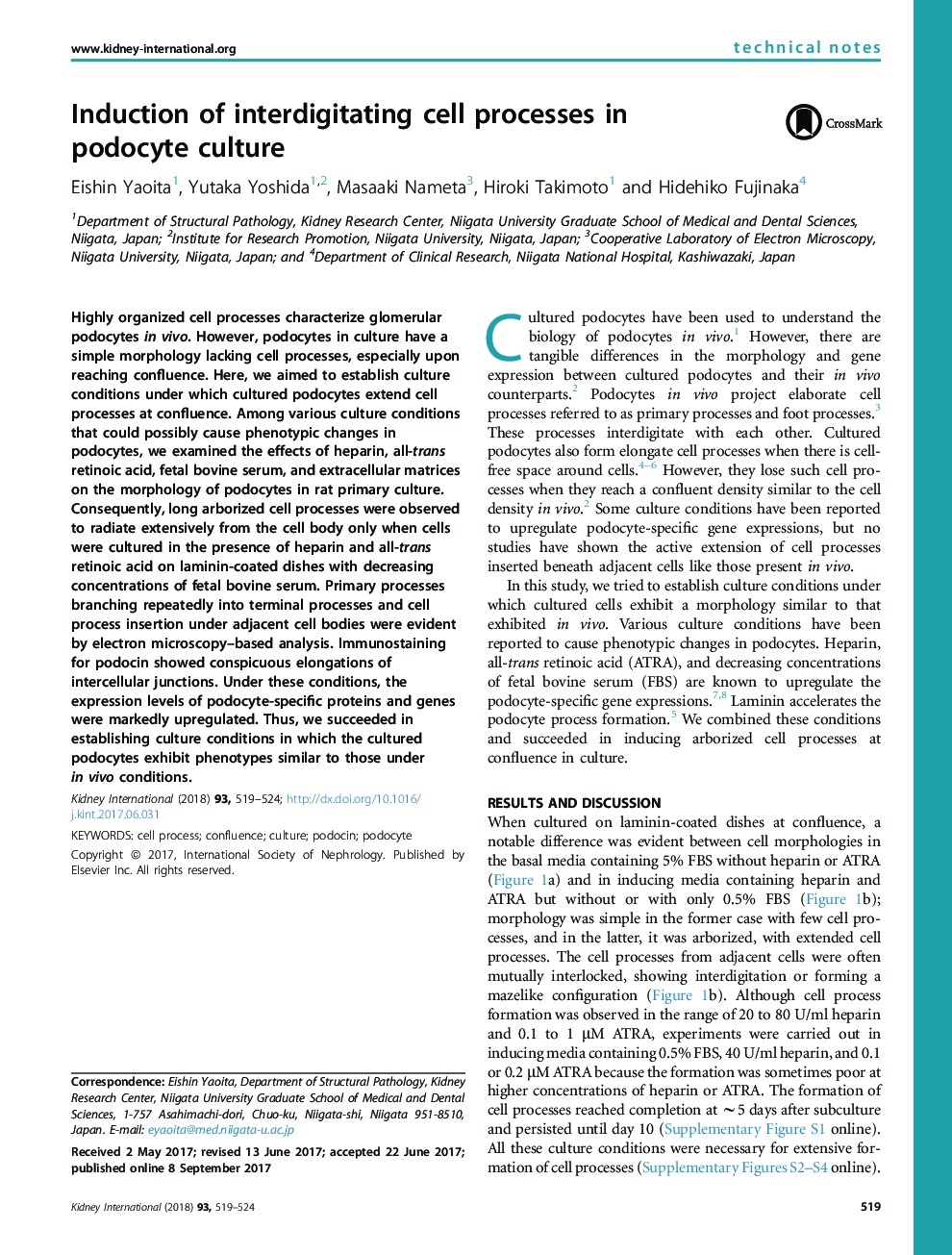| Article ID | Journal | Published Year | Pages | File Type |
|---|---|---|---|---|
| 8772986 | Kidney International | 2018 | 6 Pages |
Abstract
Highly organized cell processes characterize glomerular podocytes in vivo. However, podocytes in culture have a simple morphology lacking cell processes, especially upon reaching confluence. Here, we aimed to establish culture conditions under which cultured podocytes extend cell processes at confluence. Among various culture conditions that could possibly cause phenotypic changes in podocytes, we examined the effects of heparin, all-trans retinoic acid, fetal bovine serum, and extracellular matrices on the morphology of podocytes in rat primary culture. Consequently, long arborized cell processes were observed to radiate extensively from the cell body only when cells were cultured in the presence of heparin and all-trans retinoic acid on laminin-coated dishes with decreasing concentrations of fetal bovine serum. Primary processes branching repeatedly into terminal processes and cell process insertion under adjacent cell bodies were evident by electron microscopy-based analysis. Immunostaining for podocin showed conspicuous elongations of intercellular junctions. Under these conditions, the expression levels of podocyte-specific proteins and genes were markedly upregulated. Thus, we succeeded in establishing culture conditions in which the cultured podocytes exhibit phenotypes similar to those under in vivo conditions.
Related Topics
Health Sciences
Medicine and Dentistry
Nephrology
Authors
Eishin Yaoita, Yutaka Yoshida, Masaaki Nameta, Hiroki Takimoto, Hidehiko Fujinaka,
